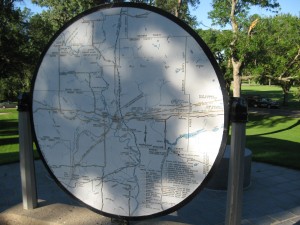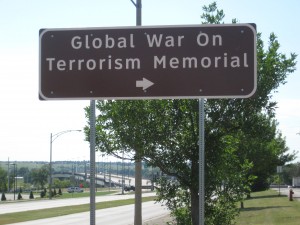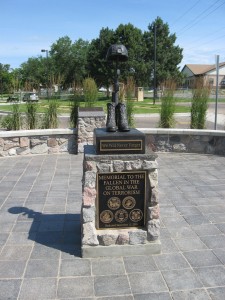#233 – Dick Bernard: August 28, 1963 and today.
August 28, 1963, I was a soldier in a U.S. Army Infantry Company. We were playing war in South Carolina, and had been slogging through the outback of that state for a week or more. Certainly, we had no access to television, and I don’t recall any contact with the outside world via radio either. We may as well have been in southeast Asia, which is what our training was about.
The August 28th March on Washington and Martin Luther King’s “I have a dream” speech passed by without any notice on our parts. In fact, we didn’t know it was taking place.
We had, however, had our brush with segregation, deep south style. Our unit was integrated – the Army was integrated – but in the rural south you went by the rural south’s rules.
At one point, a bunch of guys came across a high school that had a shower. Whites were welcome, only. Another time there was a restaurant incident where the whites would be served but not the colored.
In Saluda, S.C. I recall a laundromat with the white entrance (the good machines) on street level; the colored entrance (the cast-off machines) in the lower level, down the hill. Country stores had segregated counters for serving white and colored. The rules were the rules.
One time a member of our company came up with a copy of the Atlanta Constitution, then and still Georgia’s premiere newspaper. In that paper was a most remarkable advertisement/column “Pickrick Says:“, advertising Pickrick Skillet Fried Chicken for 25 cents, but devoting most of its full column length to a segregationist diatribe by owner Lester Maddox, who some years later became Governor of Georgia.
I didn’t keep that paper, but “Pickrick” and Maddox stuck in my mind. Some years later, in Atlanta for a conference, I wanted to see this Pickrick place, and did, in then-new Underground Atlanta.
Some years after that I went to the microfilm library at the University of Minnesota and printed out Maddox’ weekly rants for the month of August, 1963. There were five of them. I still have the copies.
On August 31, 1963, Maddox commented on “The Washington March” of August 28. Verbatim, here is what he said: “The Washington March proved that the Communists have gained a stronghold in labor, religion and government. It also proved that the movement is not one that is Christian, American, nor is it a movement for equality, but has turned into a fight against the white race. White renegades in public office, education, religion, labor, the news media and in business are guilty and the blood to be shed will be on their hands.“*
Maddox went on with other comments of a similar nature about other things, but when I hear later about today’s charade on the National Mall in Washington, I will be using my experience in 1963 as relevant context.
Eerily, what Maddox said 45 years ago resonates with today’s fear-ridden haters who will make up the nucleus of tomorrows gathering. These are people who would like to roll back the clock to the good old days when Negroes knew their proper place, and that place wasn’t equal.
We’ve come a long way since 1863 and the Emancipation Proclamation, and 1963, when there was a Dream that somehow 1863 would come to reality. We will not be turned back in 2010. But there is a powerful and vocal faction that considers progress in things like peace and justice to be somehow evil, and their presence will be seen today. They need to be exposed to the bright light of day.
* – The best response to Maddox is from Martin Luther King himself, in his 1964 book, “Why We Can’t Wait”, which chronicles 1963. This book is still in print. About the only point King misses in the book is the Communist accusation. At the time, he likely did not know that J.Edgar Hoover’s FBI was trying to find links between him, the movement he was leading, and Communism. To my knowledge, Hoover/FBI found no such links, ever.
In a sense, Maddox’ comment about “white renegades” probably basically fits King’s comments on what he observed in the same year. The power structure, including churches and labor unions, did its best to blunt the civil rights movement. Prosperous Negroes, who had made good money in the existing system, were not interested in the risks inherent in social change. Individual Priests, Nuns, workers, and other “renegades” did make the difference. They were the ones who appeared in public, especially in the early days. They disobeyed their bosses, people like Maddox, and took risks.


















